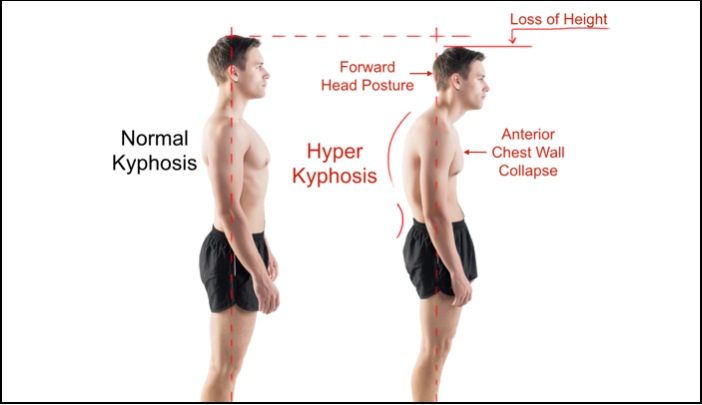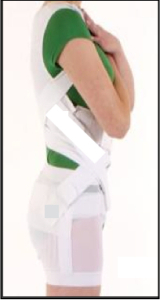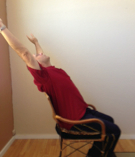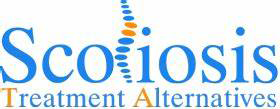What Is Kyphosis?
The thoracic spine should have a normal forward curvature when viewed from the side, which is called a normal kyphosis. Hyperkyphosis is condition of excessive rounding of the middle or upper back. The common name used for this condition is called “hunchback”. It is often seen in conjunction with people who also have a forward head posture. This condition causes a collapse of the anterior chest wall along with a diminishment of overall height.

A forward head posture can also cause significant strain to the muscles in the upper and mid back that are under tension to try and counter balance the head by bowing backward. The weight of the head is about the weight of a bowling ball. Like a bowling ball, if that weight is held close to the center of the body, it’s not a big deal but the farther it is held away from the body, the greater the lever arm and the more muscular effort is needed to hold it up.
Hyperkyphosis can also accompany neuromuscular deformities where there is poor control of the head. Another more common cause of hyperkyphosis is Scheuermann’s Disease, which is caused by a structural collapse of the anterior portion of one or more vertebra in the thoracic spine.
Once the spinal curvature is present, gravity and poor posture provide the impetus for further postural collapse and the structures in the anterior chest wall and rib cage adaptively shorten worsening of the deformity.
Rigid bracing has traditionally been thought to be ineffective for the treatment of hyperkyphosis, yet recent advances in dynamic bracing and specific corrective postural exercise has been found to more effective.
Dynamic Bracing For Hyperkyphosis
 The SpineCor corrective orthosis has been shown to be quite helpful in reducing the symptoms associated with hyperkyphosis and in many cases can also help reduced the degree of the deformity. While SpineCor is most often associated with the use for scoliosis it also has specific kyphosis set-ups that work to reduce the postural collapse gently encouraging movement of the body and head towards a more upright position.
The SpineCor corrective orthosis has been shown to be quite helpful in reducing the symptoms associated with hyperkyphosis and in many cases can also help reduced the degree of the deformity. While SpineCor is most often associated with the use for scoliosis it also has specific kyphosis set-ups that work to reduce the postural collapse gently encouraging movement of the body and head towards a more upright position.
SpineCor is a flexible orthosis that is composed of elastic bands that fasten to a pelvic base that looks like bike shorts. The bands allow freedom of movement but give a gentle reminder to the body to move into the direction of correction.
Kyphotic Specific Exercise
 Exercise for hyperkyphosis are aimed at opening up the specific muscles of the anterior chest wall, shoulder girdle and rib cage that have adaptively shortened. Additionally, muscles in the anterior portion of the cervical spine are also targeted to help reduce the forward head posture.
Exercise for hyperkyphosis are aimed at opening up the specific muscles of the anterior chest wall, shoulder girdle and rib cage that have adaptively shortened. Additionally, muscles in the anterior portion of the cervical spine are also targeted to help reduce the forward head posture.
Since hyperkyphosis is a condition of excessive forward posture of the thoracic spine these exercises are designed to restore a more neutral posture that is quite effective at relieving pain and reducing the postural collapse caused by the abnormal curvature of the spine.
Find Out If Our Hyperkyphosis Therapy Programs Are Right For You

Give us a call at (800) 943-1254 for a Free Phone Consultation and we will discuss your case of hyperkyphosis to find out if our treatment programs are right for you.


Dear Doctor Diaz, this is Mr Peter Palmer, not only do I have Scoliosis, I have Kyphosis as well, and there is literally no meat on my chest, all bone, and bumpy bone at that, almost like an old way the pilgrims used to wash their clothes in the river, rigid bumpy almost pattern like, and one side of my chest pops out over the other. Id like to know more.
I believe I have hyperkyphosis and would like to get instructions on the exercises that would help with it.
Jean Matin
[email protected]
925-939-2824
Jean, Thank you for your interest in our Kyphosis exercises. The first thing to do would be to find out if our treatments are right for you. Please give us a call at (800) 943-1254 for a Free Phone Consult to discuss you kyphosis and find out if our treatments are right for you.
Am wondering if the brace you show on website would be good for me. Also, would like exercises for scoliosis and hyperkyphosis.
Rosalyn,
Chances are yes. SpineCor has set-ups for both scoliosis and kyphosis so chances are it could help you too. Please give us a call at (800) 943-1254 for a Free Phone Consult with one of our doctors to find out if SpineCor and Schroth are right for your case of kypho-scoliosis. Dr. Brett Diaz, D.C.
I AM a54 year old male wore scoliosis braces as a chid ntil i was 15.I also had hyper kyphosis and this is what is getting worse it seems weekly one dr. said a brace at my age would not help because of my bone hardnesswhich i agreed and understad is there any thing else i can do to help my self i am in need of it before it gets out of control .THANK YOU
Dennis,
The short answer to your question is “Yes”.
While your doctor is correct that it’s unlikely the structural changes in your vertebra are going to change much at your age, they are not completely responsible for totality of your curves. Every curve, wether it’s a kyphosis or a scoliosis has both a structural and a postural component to the curve. As I mentioned the structural component is not likely going to change at your age but the postural component is still quite changeable and that can be upwards of 20% of the total curve and it’s often the portion of the curve that the pain developed. So improving that component can improve or relieve your pain. Treatments that can help do that are SpineCor and Schroth. If you are interested in finding out if they are right for you then please give us a call us for a Free Phone Consult at (800) 943-1254 to discuss your case further.
I have severe scoliosis and kyphosis and just realized I look like the above kyphosis picture. That is horrifying and humiliating. I am very self conscious and over dress even when it’s 80 degrees out! Do not want any more surgery done. Is there any way that you can help me? I live in northern Minnesota.
Cindy, Yes, there is help available. We treat both kyphosis and scoliosis with our programs and for people like you with both a combination treatment is necessary. The good news is that our program is primarily home based, meaning that you would only need to come see us every few months and you would do the exercises at home.
I would recommend that you give us a call at (800) 943-1254 for a Free Consultation. In the interim, I will send you some additional information so you can learn more about our treatments.
Dr. Diaz
My SpineCor brace is 10 years old. I am female and was fitted with a SpineCor pant which has a hole
in the front of the pant. How do I obtain a pant that is designed for women?
Elise,
If you are referring to the new style called Comfort Plus just call your SpineCor provider and he can order them for you.
Dr. Brett Diaz, D.C.
I am a 79 year old woman that has severe kyphosis and scoliosis. Was told by the orthopedic doctor that my spine is a mess. I also look like the picture above. Just recently fitted with a Brace called Peak bracing System. It does help a little bit controlling the pain, but it is big and somewhat uncomfortable. I would not wear it out. Looking for someone in my area for exercises, so I do not have to travel too far. Thank you
Here are the locations of our Schroth classes. Click on the link to find the one nearest you. http://scoliosistreatmentalternatives.com/nu-schroth-for-adults-opt-in
Nice post thanks for sharing
Dear Dr Diaz,
My 13 year old daughter has Sheuermann’s kyphosis, which has not improved with traditional PT & we have extreme difficulty getting her to wear her rigid milwaukee brace-she’s embarrased by it & only wears it at night, if at all, this past year. She is a cheerleader but in the short time of summer break & a break from her fairly intense conditioning, Her kyphosis has gotten significantly worse.
Would she benefit from your program, or Schroth type therapy? Also, do you offer at-location therapy as well as an at home program? We have difficulty motivating her with home exercise. She has recently begun to recognize the deformity in photos & is becoming self concious. I’m afraid her pediatric orthopedist may eventually want to do surgery, which we want to avoid if at all possible. Your feedback would be most appreciated. Thank you & looking forward to hearing from you.
Sincerely, Mrs. A.
Mrs. Adler,
You are correct to be concerned. I don’t know exactly what she does in her Cheerleading but if she is doing any kind of lifting or is a base of support for other girls that causes an axial load to her spine, that can be a problem, especially if she’s not being provided any kind of support while doing it.
I can understand her not wanting to wear a brace that others can see. At that age, the last thing they want to do is stick out as being different from anyone else and wearing a Milwaukee style brace is impossible to hide. While it is better than doing nothing, the reality is that wearing a posture brace at night has limited correctional benefits. Whenever you lay down the as the body already elongates and the curve is deweighted due gravity being taken out of the equation. It is the weight bearing positions such as standing, sitting and walking that put her at risk for progression, thus it’s when she needs the most support. The best analogy I can give you is to think of the head and spine like like a giant spring with a bowling ball sitting on top. If that bowling ball is not center directly over the top of the spring it’s going to cause it to bend forward due to the weight of gravity. The farthte away from the center, the greater the forces that cause the spine to bend forward. That’s why she likely is noticing it more is that she had likely also developed some forward head posture to counter balance the weight of her back bending backwards into a hump.
The challenge is finding something that she can wear during the day, when she is at greatest risk for porgression, that is corrective for her that she can agree to wear to school and not feel embarrassed.
The SpineCor dynamic orthosis offers such a solution with it’s Hyperkyphosis set up. It will help train her posture into a more upright position so that over time, it reduces the curvature resulting in a more upright posture. If she is still growing there is also the possibility of improving some of the structural portion of the curvature by de-weighting the compressed side of the vertebra which has been delayed in growth and helping it catch up some.
Since SpineCor is made of material and elastic bands, she can hide it underneath her cloths so no one will have to know she’s wearing it, which will be an important thing for her to increase her compliance. If she’s self conscious of her slouched posture and she sees the improvement in her posture with SpineCor and she doesn’t have to be embarrassed about it showing the way the Milwaukee style brace did because she can hide it under her cloths, that may be the right combination for her to be compliant with the treatment.
In addition to that, she would also benefit from specific exercises to help reduce her hyperkyphosis. These are a subset of the Schroth exercise program for those people who have a hyperkyphosis.
What’s great about our program is that can fit into her busy lifestyle without interfering by having to come into the office multiple days a week for treatment. She can be fitted for SpineCor and she’s wear it daily. Also she’ll learn the Schroth Hyperkyphosis exercises in the office and then she’ll do them at home.
What I would recommend is that you give us a call for a Free Phone Consultation with one of our doctors in an office nearest you to discuss her case further to make sure our program is right for her. If so, they will go over the details of our treatment(s), including costs and insurance considerations.
Dr. Brett Diaz, D.C.